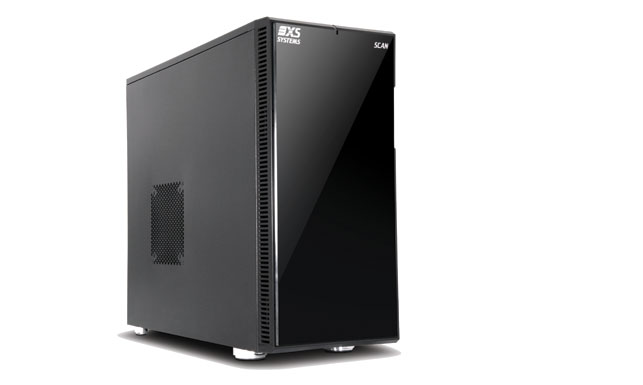Scan’s new Nvidia Maximus-certified 3XS workstation is a specialist piece of kit, optimised specifically for CUDA-enabled rendering or simulation apps.

The system works by farming out heavy duty ray trace rendering or simulation solver calculations to a dedicated Nvidia Tesla K20 compute GPU, leaving the CPU free for other tasks.
We tested with SolidWorks 2014 and Bunkspeed Pro 2014, one of a handful of design viz applications that are CUDA-enabled through the Nvidia iray ray trace renderer.
We imported a SolidWorks model into Bunkspeed, applied materials and rendered. The Tesla K20 then went all out on the ray tracing calculations but you wouldn’t think it. The machine remained fully responsive at all times, leaving us free to design unhindered in SolidWorks.
Here, 3D graphics tasks are dedicated to the Quadro K4000 GPU while the powerful six core Core i7- 4930K CPU does the rest.
Scan has worked its overclocking magic with this brand new Ivy Bridge chip.
Architecturally, it may be a generation behind Haswell, but because Scan has accelerated it to 4.4GHz, it’s lightning quick.
Indeed, it means the 3XS GW – MAX X1 tops the charts in our lightly threaded Powermill and SolidWorks Simulation tests.
The good news is big power doesn’t mean big noise and Scan keeps things very quiet with a Corsair H80i Hydro CPU water cooler.
Clamping itself onto the 130W Core i7 processor this tidy, self-contained, unit exchanges heat with a radiator at the rear of the machine. Fan noise is hardly audible, even with the K20 and Core i7 running at full pelt.
The system comes with a 256GB Samsung 840 Pro SSD, an excellent choice for OS and applications. In addition you get a 2TB Seagate Barracuda for data and 32GB of Corsair 1,600MHz DDR3 memory, plenty for large CAD or simulation models.
If you use one of the growing number of CUDA-enabled applications, the 3XS GW-MAX X3 is an excellent choice. It lets you design and render or design and simulate at the same time with no slow down.
If you don’t, drop the £2,500 Tesla K20 GPU, and you still have a superb highperformance CAD machine with enough CPU cores for occasional rendering or simulation.
To view comparative scores from other workstations please click here
For details of all our specific CAD/CAM/CAE benchmarks click here
Specifications
» Six Core Intel Core i7-4930K ‘Ivy Bridge’ (clocked to 4.4GHz)
» 32GB (4 x 8GB) Corsair 1,600MHz DDR3
» Nvidia Quadro K4000 (3GB GDDR5) + Nvidia Tesla K20 (5GB GDDR5) (320.78 driver)
» 256GB Samsung 840 PRO SSD + 2TB Seagate Barracuda
» Asus P9X79 PRO motherboard (Intel X79 chipset)
» Microsoft Windows 7 Professional 64-bit
» 3 year warranty – 1st year onsite, 2nd and 3rd year return to base (parts & labour)
CPU benchmarks
(secs – smaller is better)
CAM (Delcam PowerMill 2010) – 1) 124 2) 162 3) 212
CAE (SolidWorks 2010 Simulation) – 73
Rendering (3ds Max Design 2011) – 144
Graphics benchmarks
(bigger is better)
CAD (SolidWorks 2013 – SPECapc graphics composite) – 6.33
CAD (Creo 2.0 – SPECapc graphics test) – 6.77
Six Core Intel Core i7-4930K ‘Ivy Bridge’ (clocked to 4.4GHz)
32GB (4 x 8GB) Corsair 1,600MHz DDR3
Nvidia Quadro K4000 (3GB GDDR5) + Nvidia Tesla K20 (5GB GDDR5) (320.78 driver)
Asus P9X79 PRO motherboard (Intel X79 chipset)
256GB Samsung 840 PRO SSD + 2TB Seagate Barracuda
N/A
124
162
212
73
144
N/A






